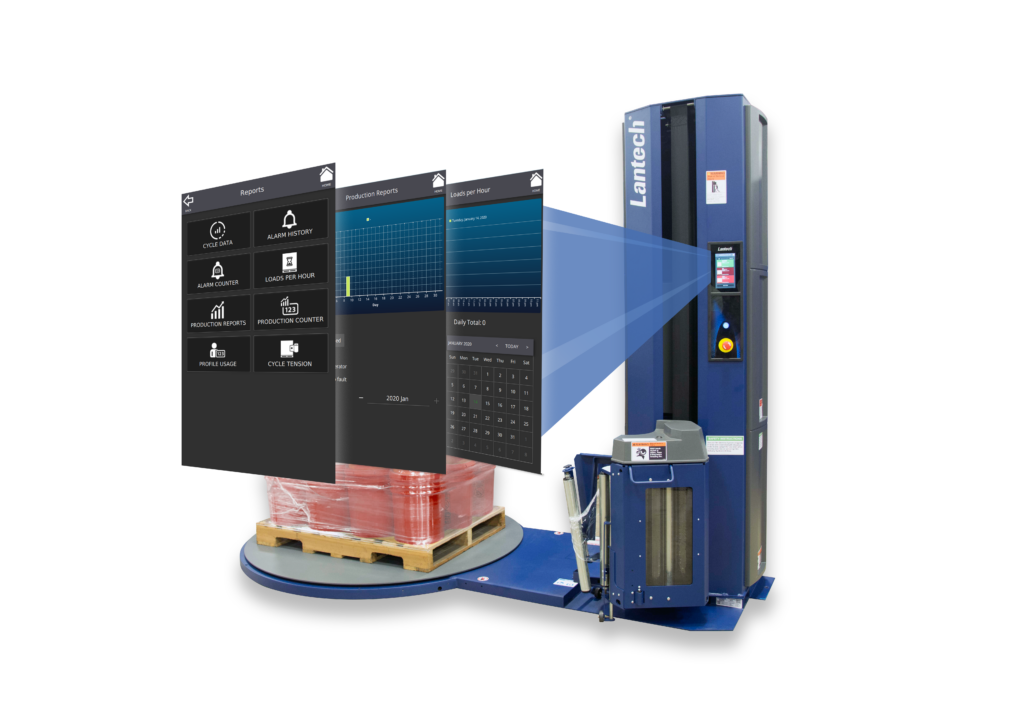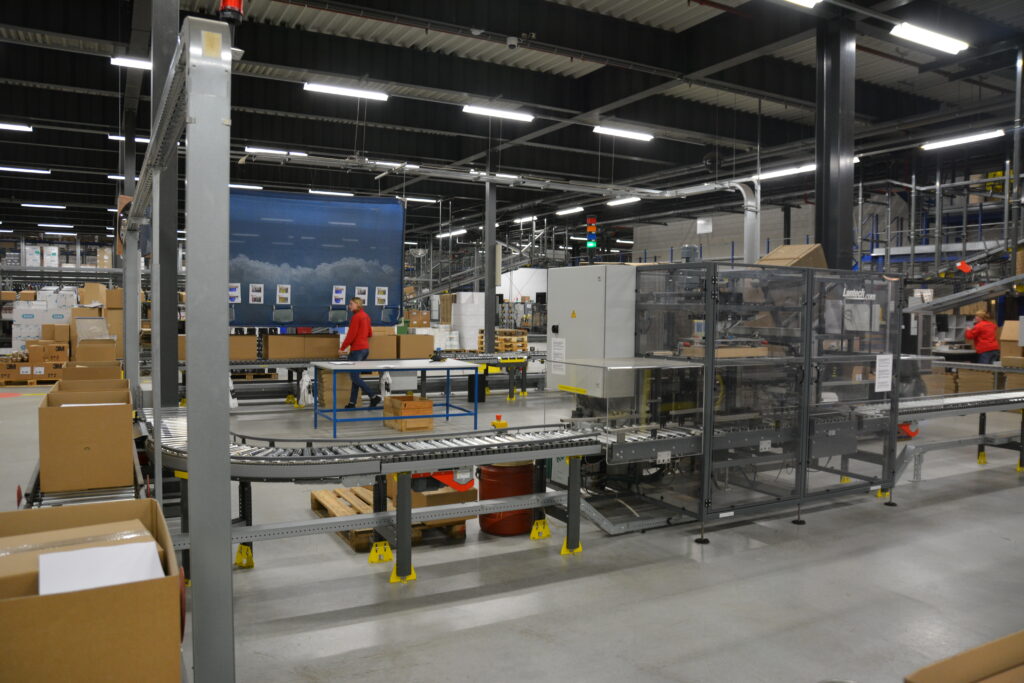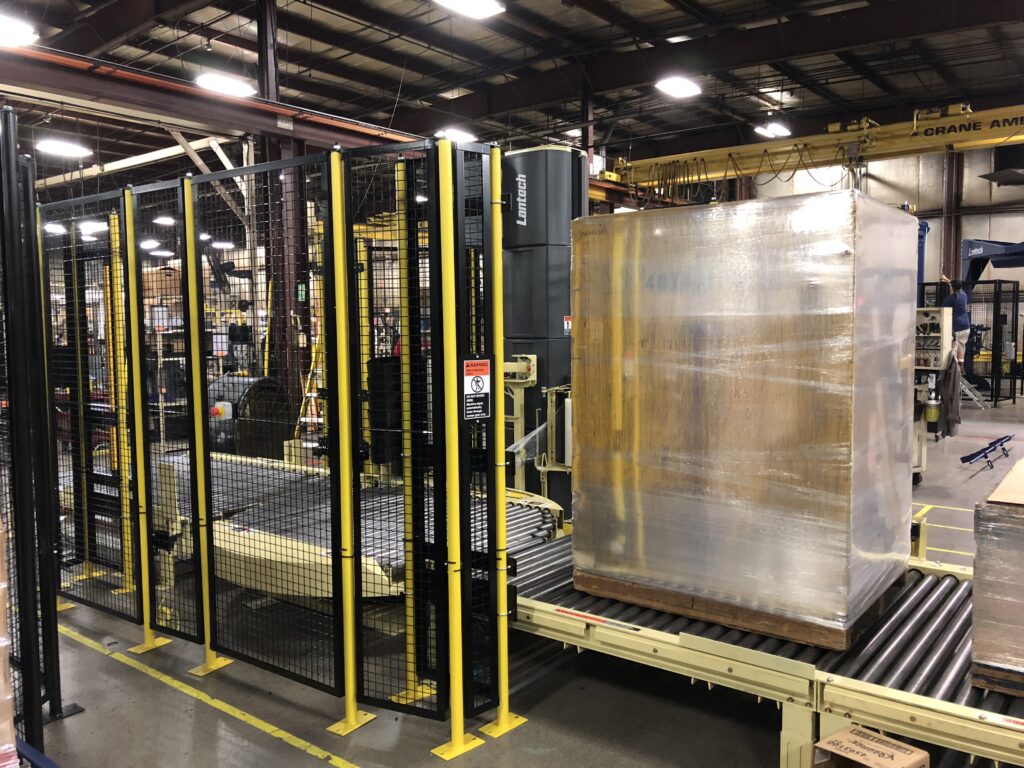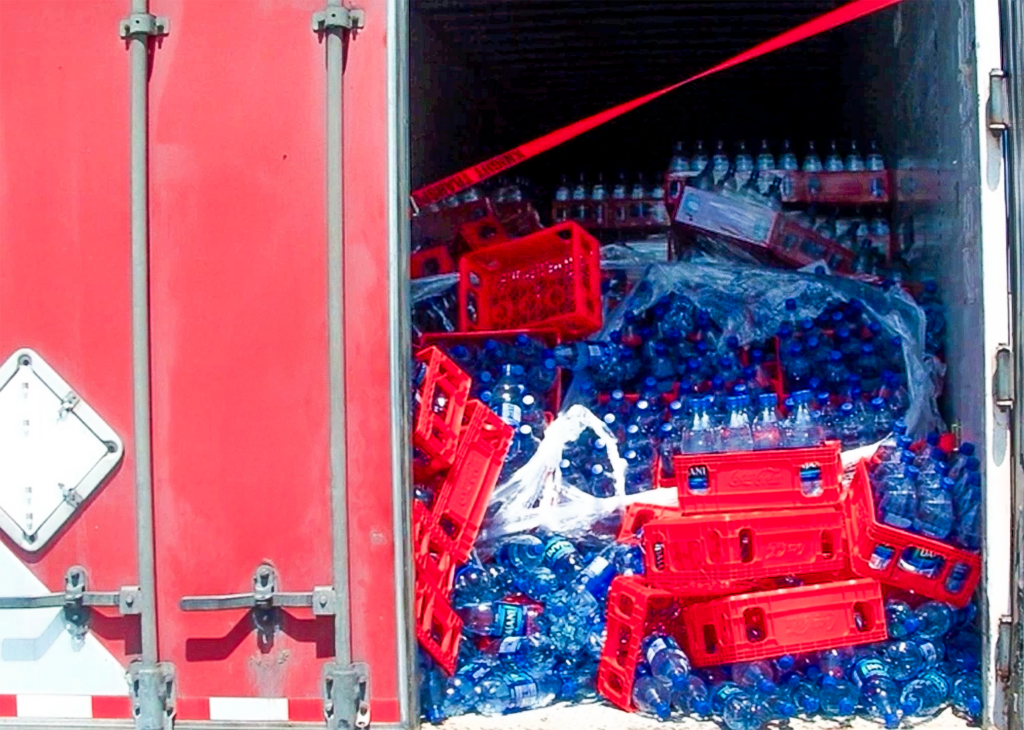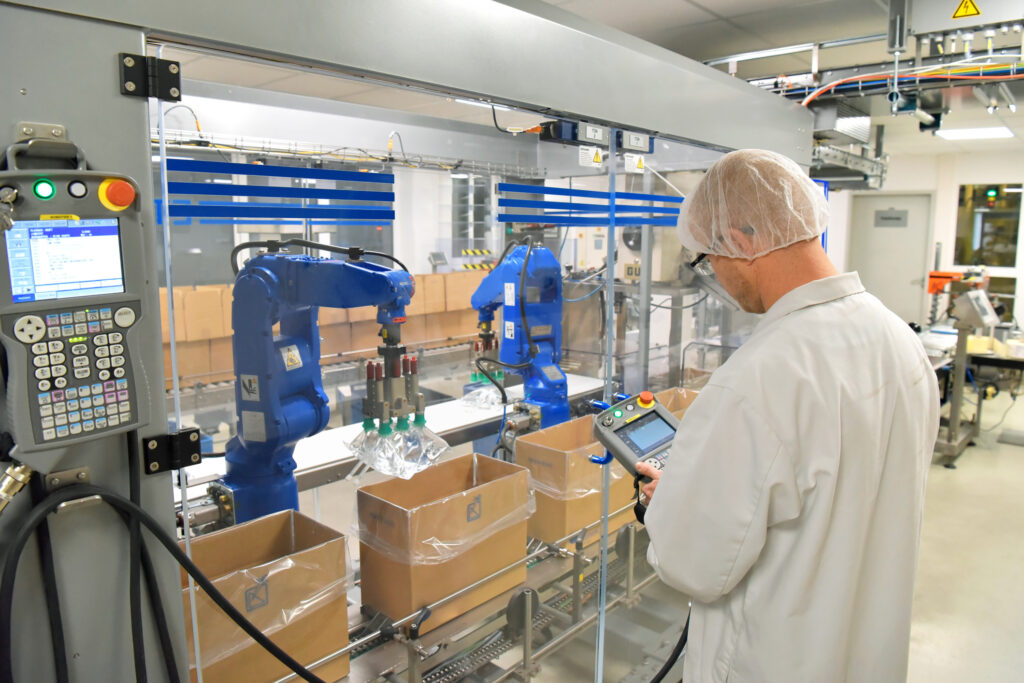Distribution centers have some of the most unique loads placed on pallets. Unlike the symmetrical loads, commonly called A loads, of say a company that produces certain types of canned or bottle goods, where virtually every case of goods are the same, a distribution center routinely packs asymmetrical, commonly called B loads, loads on their pallets. Grocery distribution centers tend to wrap lots of C type loads.
For example, cases of boxed goods, paper towels, canned goods, cereal and other non-related items must all be stacked and packed together. In most cases the heavier items go at the bottom and the lighter or more fragile items go at the top. This type of asymmetrical packing does not always lend itself to consistent stretch wrapping, and some considerations must be adapted for this type of work.
Understanding the Challenges
As we talked about above, distribution centers pallets are often built as items are picked to order. Most centers make an effort to build their pallets in an order (heaviest first) that leads to stable pallets, but this doesn’t always happen. Workers are often paid by item picked, so they are incentivized to move quickly and products are not always laid out on the floor in a way that helps them do this and build a stable pallet.
Another challenge facing distribution centers is that often their workers need to keep loads stable as they move through the warehouse, so they stretch wrap as they go. They do not want to wait for a wrapper because it would slow them down. These types stabilizing wraps are often partial. All they need to do is hold the loads together so they can be wrapped more effectively before actual shipment.
Distribution centers need to have enough machines properly located so bottlenecks don’t develop and workers aren’t waiting to wrap loads, especially stabilizing wraps.
The Right Machine for the Right Job
The unique challenges of distribution centers mean that special consideration should be taken when choosing a pallet wrapper.
First, turntable wrappers, in general, might not be the best solution for distribution centers. Turntable wrappers are not the best solution for unstable loads, overhead wrappers are better.
Second, it is important to know the dimensions of the loads that need to be wrapped. Trying to wrap a tall pallet of product on a machine designed for shorter heights can be dangerous as well as a hassle. Conversely, the same thing applies to an attempt at wrapping vertically on a horizontal wrapping machine.
The machine and film carriage should match the height of the product to be wrapped, and when needing to wrap products over the top, a ringer or horizontal wrapping machine should be employed.
Automatic stretch wrappers are used in a surprising number of distribution centers. Using a floor loaded conveyor is a popular option for automatic stretch wrappers used in beer and soda plants.
Distributed wrappers are also common in distribution centers – particularly semi-automatics. Redundancy is also a factor. Many distribution centers operate on tight schedules and can’t afford delays from machine downtime.
Getting the right machine for the right job and the right number of them is the only real answer here.
Planning, Placement, and Safety
Ideally, worker flow should be studied and wrapper placement carefully planned to allow workers easy access. Allowing adequate room for pallet jack maneuvering around the stretch wrappers will also play an important role in safety considerations.
The key to distribution center stretch wrapping efficiency is planning. With an understanding of the unique challenges in distribution centers you can begin to plan out the best way to utilize stretch wrappers to increase efficiency and safety.
You may be interested in these related posts:
- 3 Ways A Stretch Wrapper Can Make Your Forklift Driver More Efficient
- Forklift vs. Pallet Jack – Your Stretch Wrapper Needs to Answer “Yes”
This post was published on August 23, 2016 and updated on July 29, 2019.
August 23, 2016

